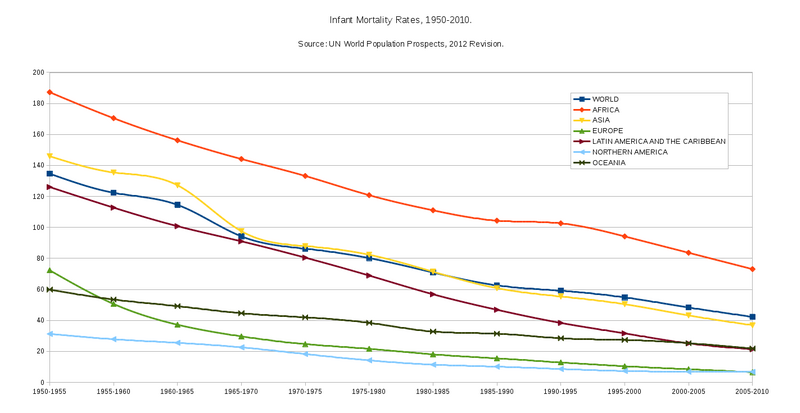1. Summary
What is demography?Deomography is the study of human population dynamics. It deals human population, rate of death, rate of birth and it is interested in migration trends etc.
(from https://en.wikibooks.org/wiki/Introduction_to_Sociology/Demography)
The chart shows trends in childbearing by region of the world. Most continents and countries have tendency to decline. And Latin America and the caribbean has the greatest reduction rate.
(from : https://en.wikibooks.org/wiki/Introduction_to_Sociology/Demography
source : UN world popluation prosepcts, 2012 revision)
This chart indicates the infant mortality rates during 1950-2010. It said that the less developed regions of the world have higher infant mortality rates than the more developed regions. However the overall mortaility rates can be differ to the above chart.
However, in developed countries, the overall mortality rate may be different from the chart above. Because it has a high old mortality rate in the developed world(the developed world has high rate of the population about elder) and affects the overall mortality rate.
2. Intersets
I want to take the script verse.
“If you want to reduce birth rates... you need to provide women with opportunities to be educated and to get jobs.”
Why does the education level of women influence the fertility rate?
I think Conceive and single parenting have given women a lot of pain, and as women's level of knowledge has increased, women have begun to resist this culture, refusing to give birth, and thus the birth rate has decreased.
3. Discussion
If the population is reduced to around 2 billion, and the overcrowding phenomenon is resolved and stabilized, will hunger, illiteracy, and infectious diseases be eliminated?I don't think so. If people continue to pursue profits, even if the overcrowding phenomenon is resolved, hunger and illiteracy will still remain. The evidence suggests that even now there is still enough food to feed the seven billion people, but hunger still exists.


Comments
Post a Comment